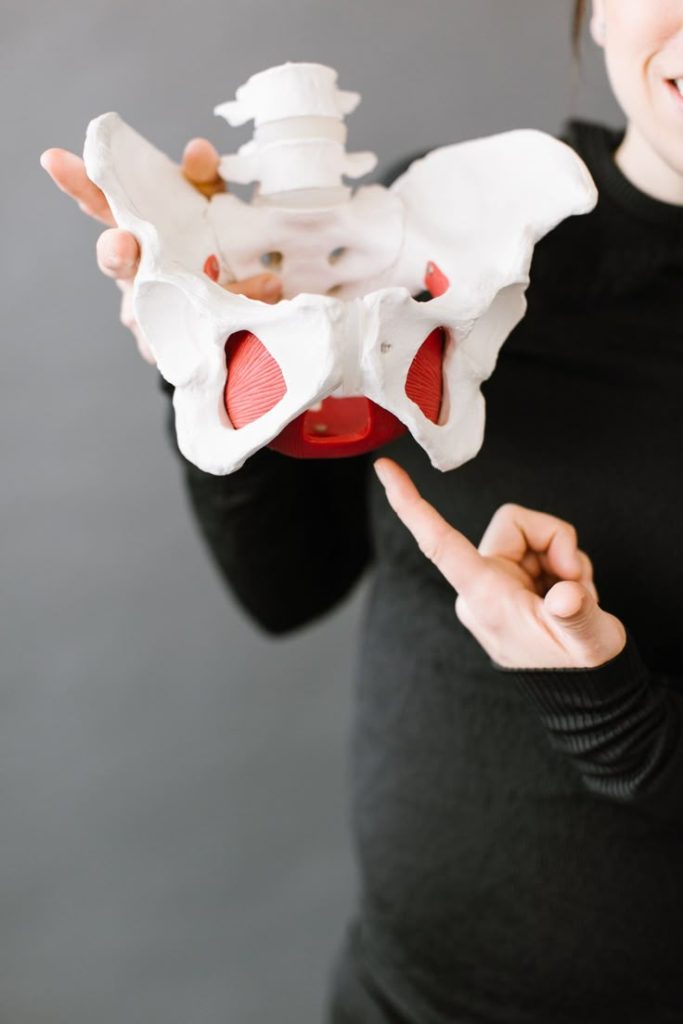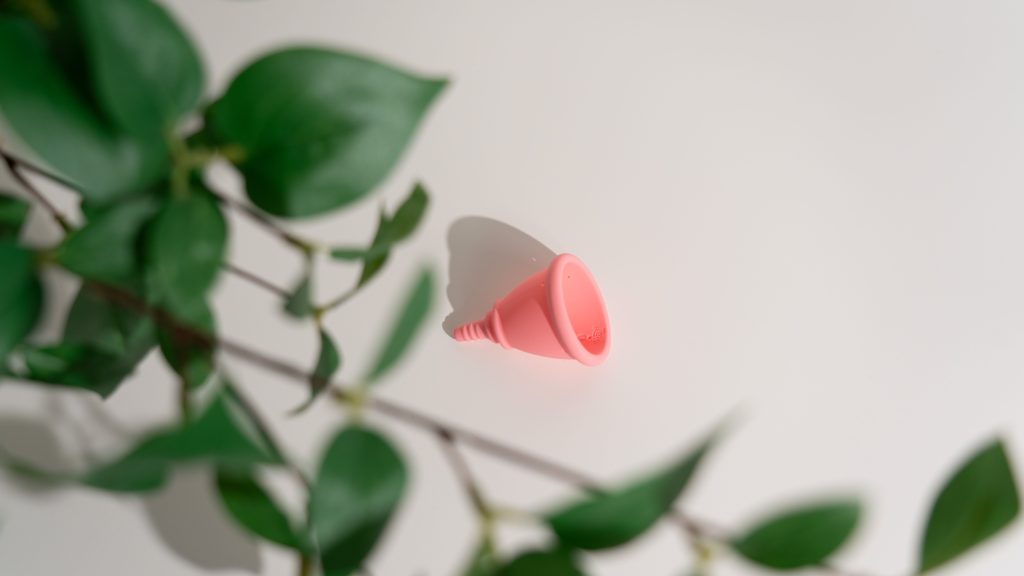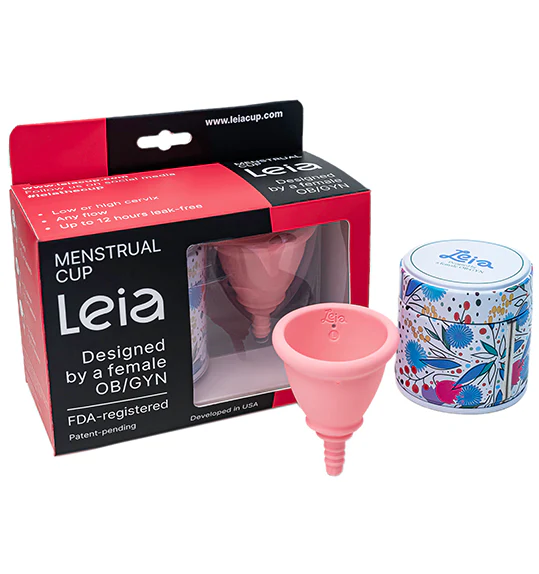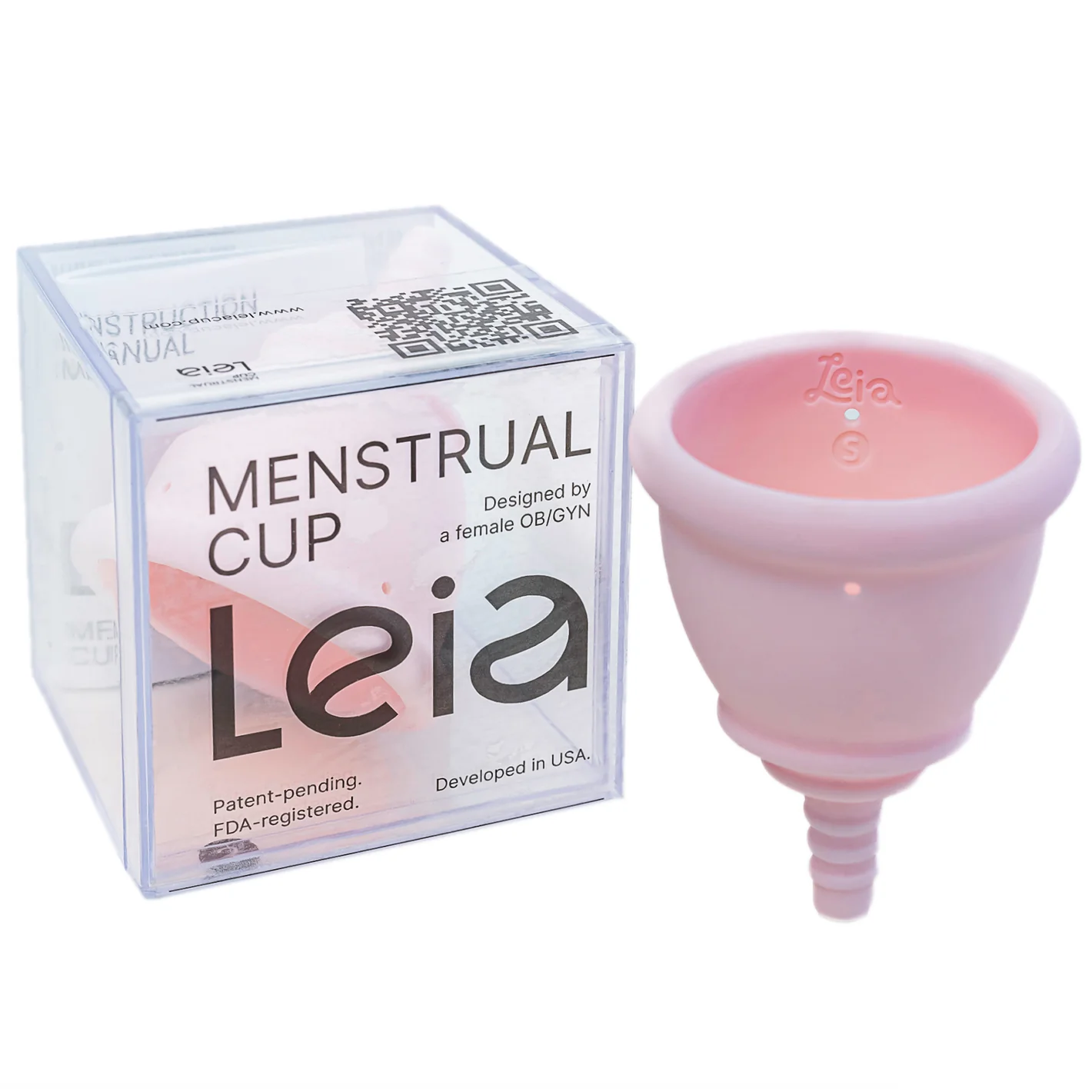Your cart is currently empty!
Understanding Pelvic Floor Health and Menstrual Comfort

Pelvic Muscles: What They Are and Why They Matter for Women’s Health
The pelvic muscles, often referred to as the pelvic floor muscles, form a group of muscles that span the bottom of the pelvis. They act as a supportive hammock, stretching from the pubic bone at the front to the tailbone at the back, and from one side of the pelvis to the other. These muscles are crucial for supporting several key organs, including the bladder, uterus, vagina, and rectum.
Key Functions of Pelvic Muscles:
- Support for Pelvic Organs: The pelvic floor muscles provide essential support for the pelvic organs, including the bladder, uterus, and rectum. They help keep these organs in their proper positions and prevent prolapse (when organs shift out of place).
- Control of Urinary and Bowel Functions: Pelvic floor muscles play a central role in controlling bladder and bowel function. They help maintain continence, meaning they prevent urine, stool, or gas from leaking. They also help coordinate the urge to urinate or defecate and control the muscles that release waste.
- Sexual Health and Function: These muscles contribute to sexual pleasure and function. Strong pelvic floor muscles improve sensations during sex, help with vaginal tone, and can support healthy vaginal function. They also help with the ability to achieve orgasm, as they play a role in contraction during sexual activity.
- Stabilization and Core Support: The pelvic floor works together with other core muscles (such as the abdominals and back muscles) to provide stability and support to the spine. A strong pelvic floor helps maintain proper posture and alignment of the pelvis, which is important for overall body stability.
- Support During Pregnancy and Childbirth: During pregnancy, the pelvic floor muscles support the growing uterus and assist in managing the pressure from the weight of the baby. They also play a key role during childbirth by helping the baby pass through the birth canal. After childbirth, these muscles can weaken or stretch, making postpartum recovery important for regaining strength.
Why Pelvic Muscles Are So Important for Women’s Health:
- Preventing Prolapse: Pelvic organ prolapse (POP) occurs when the pelvic organs, such as the uterus or bladder, drop down from their usual position, causing discomfort and potential urinary or bowel issues. Weak pelvic muscles can contribute to prolapse, particularly after childbirth or as a result of aging.
- Preventing Incontinence: Weak pelvic floor muscles can lead to urinary incontinence (leakage of urine) or fecal incontinence. This can happen with coughing, sneezing, or laughing, and is more common after childbirth or during menopause, when estrogen levels decline.
- Sexual Function and Comfort: Pelvic muscle dysfunction can cause discomfort or pain during intercourse, or even make it difficult to achieve orgasm. Strengthening these muscles can enhance sexual satisfaction and prevent sexual dysfunction.
- Core Strength and Stability: A healthy pelvic floor contributes to overall core strength and stability. This is important for posture, lower back health, and preventing muscle imbalances that can lead to pain or discomfort.
- Postpartum Recovery: Pregnancy and childbirth put significant strain on the pelvic floor. After giving birth, pelvic floor exercises (like Kegels) are essential for restoring muscle tone, preventing incontinence, and aiding in the recovery of pelvic organ support.

How Do I Know If I Have Weak Pelvic Floor Muscles?
According to international data, 53% of women of reproductive age experience signs of pelvic floor dysfunction, and this number rises to 72% for women aged 40-49.According to research, it has also been found that the probability and degree of prolapse depend on the number of births in women. Weak pelvic muscles can lead to several symptoms, including:
- Frequent urination and urinary incontinence
- Decreased libido, pain during sex, discomfort, and difficulty achieving orgasm
- Open interlabial space and vaginal gas
- Frequent inflammatory diseases
- Tendency to constipation and defecatory dysfunction
- Vaginal wall and uterine prolapse
Although Leia is not a cure for pelvic floor dysfunction, it helps women feel more comfortable during their periods. With its anatomically accurate shape and tight ring, Leia provides additional muscle support, similar to a pessary used in prolapse treatment, though it does not replace one. For those experiencing weak pelvic muscles, incorporating pelvic floor exercises and using the right menstrual cup for a low cervix can improve comfort and prevent complications.
The Importance of Strengthening the Pelvic Floor Muscles
The pelvic floor is a musculofascial layer supporting the bones of the pelvis. It plays a critical role in maintaining urinary and bowel control and preventing organ prolapse. It consists of three primary systems:
- Urethral support system
- Vaginal support system
- Rectal support system
Dysfunction in these muscles can result in organ prolapse and issues with urinary and bowel function. Women who have experienced vaginal childbirth are particularly at risk.
Fortunately, you can strengthen these muscles through regular pelvic floor exercises, which help improve muscle tone and support. It is also essential to avoid excessive weightlifting, as heavy strain can weaken the pelvic floor over time. Ensuring a gentle recovery after childbirth allows the muscles to gradually regain strength without unnecessary stress. Additionally, preventing constipation is crucial, as frequent straining can contribute to pelvic floor dysfunction. Lastly, avoiding prolonged sitting or standing helps maintain proper circulation and reduces pressure on these vital muscles.
During menstruation, our Leia cup provides both comfort and secure leak protection. Its anatomically designed shape and reinforced rim keep it in place, offering additional muscle support, even during physical activities.
Weak Pelvic Floor Muscles After Childbirth: Is It Irreversible?
Postpartum recovery can be challenging, as pregnancy and childbirth put immense strain on pelvic floor muscles. Many women experience urinary incontinence, constipation, and pelvic pain, but with proper recovery techniques, these muscles can regain strength.
Early postpartum exercises should focus on diaphragmatic breathing before progressing to Kegel exercises. Consulting a gynecologist before starting intense workouts is essential. If left unaddressed, weakened pelvic floor muscles can lead to:
- Organ prolapse and low cervical position
- Urinary incontinence
- Hemorrhoids
- Pain during sex
Even years after childbirth, it is possible to strengthen these muscles through targeted training. Using a menstrual cup in the first menstruation after birth can also support weakened muscles and provide leak-proof protection.
Read more about postpartum recovery, motherhood, and child sexual education on our blog.
It might be of interest to you
Nurturing Understanding: Why Talking to Children About Menstruation Matters
Why It’s Important To Talk To Children About Menstruation

Understanding Uterine Prolapse and Low Cervix

Uterine prolapse occurs when the uterus descends from its normal pelvic position. Causes include childbirth, weak pelvic floor muscles, and increased intra-abdominal pressure from lifting heavy weights or aging.
A low cervix is often a sign of early prolapse. Some women notice this postpartum when they can easily feel their cervix with shallow finger insertion. If pelvic floor recovery does not return the cervix to its original position, a low cervix may persist.
Women with a low cervix can still use menstrual cups. In fact, Leia is an ideal menstrual cup for a low cervix, providing a secure fit and optimal comfort. If untreated, uterine prolapse can lead to:
- Urinary dysfunction
- Bowel movement issues
- Frequent urinary tract infections
- Painful intercourse
- Severe vaginal wall prolapse
While mild prolapse can be managed conservatively, advanced cases may require surgical intervention. Regular pelvic floor exercises and the right menstrual products can help manage symptoms and improve quality of life.
How Weak Pelvic Floor Muscles Affect Sexual Health

Pelvic floor dysfunction can significantly impact intimacy in various ways. It can lead to reduced sensation during sex, making it difficult for both partners to fully enjoy the experience. In men, it may contribute to erectile dysfunction, while women might struggle to achieve orgasm due to insufficient muscle tone. Additionally, misalignment of the pelvic organs can cause pain or discomfort during intercourse, further affecting sexual well-being. In some cases, individuals may also experience involuntary urine leakage during intimacy, which can be both distressing and embarrassing. Strengthening the pelvic floor muscles through targeted exercises can help alleviate these issues and improve overall sexual health.
Strengthening these muscles through exercises can enhance pleasure and prevent discomfort. Additionally, focusing on diaphragm and thoracic mobility can further support pelvic health.
During menstruation, using Leia helps reduce discomfort and ensures leak-free protection, allowing you to continue your daily activities with confidence.
By prioritizing pelvic floor health through regular exercise and using a well-designed menstrual cup like Leia, you can support your muscles, manage symptoms, and enjoy greater comfort during menstruation and beyond.
How to Keep Pelvic Muscles Healthy:
- Pelvic Floor Exercises (Kegels): Regular exercises can strengthen the pelvic floor, improve muscle tone, and enhance bladder and bowel control.
- Avoiding Strain: Excessive lifting, chronic constipation, and prolonged sitting can place unnecessary strain on the pelvic floor. Staying active and managing constipation can help.
- Postpartum Care: After childbirth, focusing on gradual recovery and pelvic floor rehabilitation can help restore strength and prevent complications.
- Healthy Lifestyle: Maintaining a healthy weight and staying physically active can help reduce the risk of pelvic floor dysfunction.
In conclusion, pelvic floor muscles are essential for overall health, contributing to bladder and bowel control, sexual function, and core stability. Maintaining their strength through exercise and lifestyle adjustments is vital for preventing complications such as incontinence, prolapse, and pelvic pain, and for promoting overall well-being throughout a woman’s life.
Сan you do pelvic floor therapy on your period?

Yes, you can do pelvic floor therapy while on your period. The therapy itself doesn’t interfere with menstruation, so unless you’re experiencing discomfort or heavy bleeding that makes certain exercises difficult, it’s generally safe to continue.
That said, you may want to adjust your routine depending on how you’re feeling.
You can continue pelvic floor therapy while on your period, but there are a few adjustments you might need to make based on how you’re feeling. For pelvic floor exercises like Kegels or stretches, you can usually continue as normal. If you’re seeing a physical therapist for hands-on treatment, it’s still okay to attend sessions, but it’s a good idea to let your therapist know you’re on your period so they can make any necessary adjustments for your comfort. If you’re experiencing pain, cramps, or bloating, you may need to take it easier or skip certain movements that feel uncomfortable. It’s important to listen to your body and make modifications as needed.
It’s important to listen to your body and communicate with your therapist if you’re feeling any discomfort or need adjustments to your therapy routine.
5-Minute Pelvic Floor Strengthening Routine
1. Kegel Exercises
Kegel exercises are a simple yet effective way to strengthen the pelvic floor muscles, improving bladder control, supporting pelvic organs, and enhancing sexual function. These exercises involve contracting and relaxing the muscles responsible for controlling urine flow.
To perform Kegel exercises correctly:
- Identify the right muscles – The easiest way to find them is by stopping your urine midstream. The muscles you engage are your pelvic floor muscles.
- Contract the muscles – Tighten your pelvic floor muscles and hold for 3-6 seconds, ensuring you do not tense your abdomen, thighs, or buttocks.
- Release and relax – Slowly relax the muscles for 6-10 seconds before repeating the exercise.
- Maintain proper breathing – Inhale deeply as you relax and exhale while contracting the muscles.
Repeat regularly – Perform 10-15 repetitions, three times a day, for the best results.
2. Diaphragmatic Breathing
Diaphragmatic breathing, also known as deep belly breathing, is a technique that strengthens the diaphragm and improves coordination with the pelvic floor muscles. This practice enhances oxygen flow, reduces tension, and supports overall pelvic health.
To perform diaphragmatic breathing correctly:
- Find a comfortable position – Lie on your back with your knees bent and feet flat on the floor. You can place a pillow under your knees for added comfort.
- Hand placement for awareness – Place one hand on your chest and the other on your abdomen, just below your ribcage. This helps you monitor your breath movement.
- Deep inhalation – Inhale deeply through your nose, allowing your abdomen to expand while keeping your chest still. Focus on filling your lower lungs with air rather than breathing into your chest.
- Controlled exhalation – Slowly exhale through pursed lips, as if you were blowing through a straw. As you exhale, your abdomen should gently fall back to its original position.
- Maintain a steady rhythm – Continue this breathing pattern for 5-10 minutes, ensuring each breath is slow and controlled.
Practicing diaphragmatic breathing daily can help reduce intra-abdominal pressure, improve pelvic muscle coordination, and support those dealing with weak pelvic floor muscles, postpartum recovery, and period pain.
3. Chest Opening Exercises
Chest-opening exercises improve posture, relieve tension, and enhance the function of the diaphragm and pelvic floor. These movements help maintain proper intra-abdominal pressure, reducing stress on the pelvic muscles and promoting better core stability.
Here are some effective chest-opening exercises:
- Shoulder Blade Retraction and Protraction – Sit or stand with your back straight. Pull your shoulder blades together, hold for a few seconds, then push them forward. Repeat this motion 10-15 times. This strengthens the upper back and relieves tension in the chest.
- Cat-Cow Stretch (Spinal Flexion and Extension) – Get on all fours with your hands under your shoulders and knees under your hips. Inhale as you arch your back, lifting your head and tailbone (“cow” position). Exhale as you round your back, tucking your chin to your chest (“cat” position). Perform 10-15 repetitions to improve spine mobility and relieve tension.
- Knee-to-Chest Stretch – Lie on your back and gently pull your knees toward your chest, wrapping your arms around them. Hold for 4-5 seconds before slowly releasing. This helps relax the lower back and improves flexibility.
- Alternating Elbow-to-Knee Touches – While lying on your back, place your hands behind your head. Lift your head and shoulders off the ground, bringing your left elbow toward your right knee. Lower and repeat on the other side. Perform 10-15 repetitions to strengthen core muscles and enhance pelvic stability.
- Opposite Hand-to-Toe Reach – Lie on your back with your legs extended. Raise one leg and reach your opposite hand toward your toes, engaging your core. Lower and switch sides. Repeat 10-15 times for improved flexibility and coordination.
These exercises, when performed regularly, contribute to stronger pelvic floor muscles, better posture, and improved overall well-being. Combined with the Leia menstrual cup, which provides reliable support and leak protection, they can help women manage weak pelvic muscles, heavy periods, and postpartum recovery more comfortably.
Benefits of Using a Menstrual Cup for Pelvic Floor Dysfunction and Low Cervix

Using a menstrual cup for pelvic floor dysfunction and a low cervix can offer several significant benefits, providing both comfort and support during menstruation. Here are the main advantages:
1. Support for Pelvic Organs
A menstrual cup, especially when properly fitted anatomically, can provide additional support to the pelvic floor muscles. This can be beneficial when the muscles are weak, as the cup helps stabilize the vagina, reducing pressure on the pelvic organs and promoting better comfort.
2. Ideal for Women with Low Cervix
A menstrual cup can be particularly convenient for women with a low cervix, as there are cups available in different shapes and sizes. Some models, like the Leia cup, are designed specifically to fit women with a low cervix, ensuring a secure fit and optimal comfort, preventing leaks and increasing confidence throughout the day.
3. Helps with Incontinence Issues
Women with pelvic floor dysfunction often experience urinary incontinence, especially during physical activities or while laughing. Using a menstrual cup can help by providing a snug fit and additional support, preventing leaks and improving overall confidence.
4. Convenience and Safety
A menstrual cup is a durable and eco-friendly product that can be reused multiple times. For women with pelvic floor dysfunction or a low cervix, it provides a comfortable way to manage menstruation without worrying about frequent changes of pads or tampons or dealing with leaks.
5. Less Pressure on Pelvic Organs
A menstrual cup does not put pressure on the abdomen or pelvic organs, unlike pads, especially during physical activity. This is crucial for women with pelvic floor weakness, as excessive pressure can worsen muscle condition.
6. Reducing Discomfort and Pain
A menstrual cup helps maintain the correct position of the cervix and may reduce sensations of heaviness and pain in the lower abdomen, which are common with pelvic floor weakness. Additionally, the cup does not cause chafing or irritation like pads sometimes can.
7. Convenience During Physical Activities
Thanks to its secure placement, a menstrual cup is perfect for active women, as it stays in place and does not cause discomfort during movement. This is particularly helpful for women with weak pelvic floor muscles who might feel discomfort from other hygiene products during exercise or daily activities.
8. Easy Maintenance and Hygiene
A menstrual cup is easier to use and requires less maintenance than other products like tampons or pads. It does not cause dryness or irritation, which can be a concern for women with weakened pelvic floor muscles, who may also face sensitivity issues.
9. Psychological Comfort
For women with pelvic floor dysfunction or a low cervix, it is important to feel confident in everyday life, including during menstruation. Using a menstrual cup can reduce worries about leaks and boost self-esteem, offering a sense of control and confidence.
Conclusion:
Using a menstrual cup for pelvic floor dysfunction and a low cervix can significantly improve comfort and safety during menstruation. It not only helps prevent leaks but also supports the proper positioning of organs, easing symptoms and promoting recovery. Choosing the right cup, such as the Leia cup, which is specifically designed for a low cervix, makes this solution even more effective.
FAQ
How menstrual cup affect on pelvic floor pain during period?
A menstrual cup can help reduce pelvic floor pain during periods by providing stable support to the pelvic organs, reducing external pressure, and preventing leaks. It eliminates friction and irritation caused by pads or tampons, which can worsen pelvic discomfort. The secure fit of the cup also helps prevent additional strain on the pelvic floor muscles, promoting greater comfort during menstruation.
Can a weak pelvic floor cause heavy periods ?
A weak pelvic floor does not directly cause heavy periods, but it can contribute to complications like pelvic organ prolapse, which may affect menstrual flow and make periods feel heavier or more uncomfortable.
Is any menstrual cup suitable for weak pelvic floor muscles?
No, there are currently very few products on the market that are suitable for women with pelvic floor muscle dysfunction and a low cervix. Leia has been designed specifically for women with a low cervix and/or have weak pelvic floor muscles.A specially designed tight ring at the top of the product provides additional support for weakened muscles, which ensures proper insertion and protection against leaks. The use of dense medical grade silicone prevents the product from being compressed or deformed during use.



